
Fornax is a constellation in the southern celestial hemisphere, partly ringed by the celestial river Eridanus. Its name is Latin for furnace. It was named by French astronomer Nicolas Louis de Lacaille in 1756. Fornax is one of the 88 modern constellations.

An elliptical galaxy is a type of galaxy with an approximately ellipsoidal shape and a smooth, nearly featureless image. They are one of the three main classes of galaxy described by Edwin Hubble in his Hubble sequence and 1936 work The Realm of the Nebulae, along with spiral and lenticular galaxies. Elliptical (E) galaxies are, together with lenticular galaxies (S0) with their large-scale disks, and ES galaxies with their intermediate scale disks, a subset of the "early-type" galaxy population.

A lenticular galaxy is a type of galaxy intermediate between an elliptical and a spiral galaxy in galaxy morphological classification schemes. It contains a large-scale disc but does not have large-scale spiral arms. Lenticular galaxies are disc galaxies that have used up or lost most of their interstellar matter and therefore have very little ongoing star formation. They may, however, retain significant dust in their disks. As a result, they consist mainly of aging stars. Despite the morphological differences, lenticular and elliptical galaxies share common properties like spectral features and scaling relations. Both can be considered early-type galaxies that are passively evolving, at least in the local part of the Universe. Connecting the E galaxies with the S0 galaxies are the ES galaxies with intermediate-scale discs.
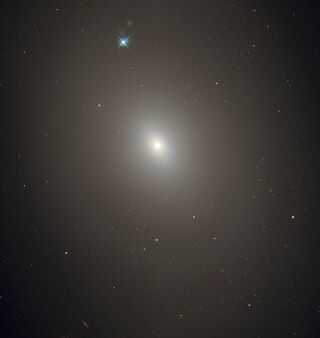
Messier 85 is a lenticular galaxy, or elliptical galaxy for other authors, in the Coma Berenices constellation. It is 60 million light-years away, and has a diameter of about 36.99 kiloparsecs across.

NGC 1316 is a lenticular galaxy about 60 million light-years away in the constellation Fornax. It is a radio galaxy and at 1400 MHz is the fourth-brightest radio source in the sky.

NGC 1427 is a low-luminosity elliptical galaxy located approximately 71 million light-years away from Earth. It was discovered by John Frederick William Herschel on November 28, 1837. It is a member of the Fornax Cluster. The galaxy has a stellar mass of 7.9 × 1010M☉, and a total mass of 9.4 × 1010M☉. However, the mass of the dark matter halo surrounding the galaxy is around 4.3 × 1012M☉.
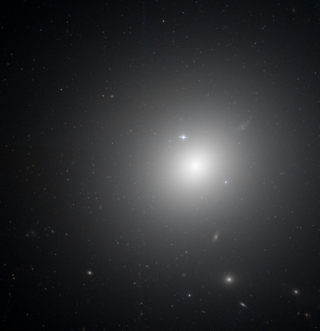
NGC 1399 is a large elliptical galaxy in the Southern constellation Fornax, the central galaxy in the Fornax Cluster. The galaxy is 66 million light-years away from Earth. With a diameter of 130 000 light-years, it is one of the largest galaxies in the Fornax Cluster and slightly larger than the Milky Way. William Herschel discovered this galaxy on October 22, 1835.
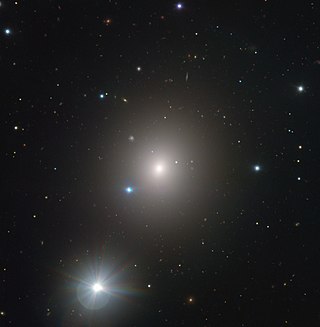
NGC 1404 is an elliptical galaxy in the Southern constellation Eridanus. It was discovered on November 28, 1837, by the astronomer John Herschel. Based on the tip of the red-giant branch distance indicator, it lies at a distance of approximately 60 million light-years from the Milky Way. It is one of the brightest members of the Fornax Cluster.

NGC 1380 is a lenticular galaxy located in the constellation Fornax. It is located at a distance of circa 60 million light years from Earth, which, given its apparent dimensions, means that NGC 1380 is about 85,000 light years across. It was discovered by James Dunlop on September 2, 1826. It is a member of the Fornax Cluster.

NGC 1381 is a lenticular galaxy located in the constellation Fornax. It is located at a distance of about 60 million light years from Earth, which, given its apparent dimensions, means that NGC 1381 is about 55,000 light years across. It is a member of the Fornax Cluster. NGC 1381 appears edge-on and features a thin disk with high surface brightness and a boxy bulge. Both the box-shaped bulge and the kinematics of the central area of the galaxy suggest that NGC 1381 has a bar.

NGC 1374 is a low-luminosity elliptical galaxy in the southern constellation Fornax. It was discovered by John Herschel on November 29, 1837.

NGC 1375 is a barred lenticular galaxy in the constellation Fornax discovered by John Herschel on November 29, 1837. It is believed to be a member of the Fornax Cluster.
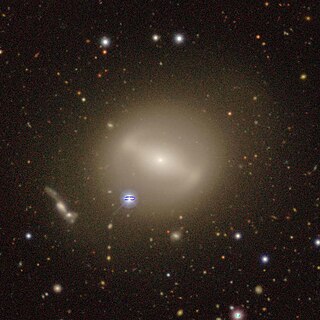
NGC 1460 is a barred lenticular galaxy with a peanut-shaped bar approximately 65 million light-years away from Earth in the constellation of Eridanus. It was discovered by astronomer John Herschel on November 28, 1837. It is a member of the Fornax cluster.
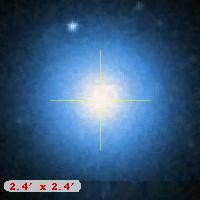
NGC 1379 is a low-luminosity elliptical galaxy in the southern constellation Fornax. It was discovered by William Herschel on December 25, 1835.

NGC 1332 is an almost edge-on elliptical galaxy located in constellation of Eridanus. Situated about 70 million light years away, it is a member of the Eridanus cluster of galaxies, a cluster of about 200 galaxies. It is also the brightest member of the NGC 1332 Group. It was discovered by William Herschel on 9 December 1784.

NGC 1369 is a barred lenticular galaxy located 59 million light years away in constellation of Eridanus. The galaxy was discovered by astronomer Julius Schmidt on January 19, 1865, and is a member of the Fornax Cluster. NGC 1369 is a host to a supermassive black hole with an estimated mass of 1.8 million solar masses.
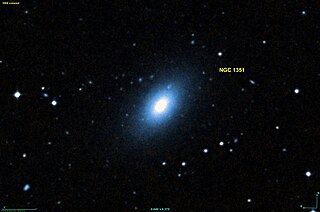
NGC 1351 is a lenticular galaxy in the constellation Fornax. It has a redshift of z=0.00505, and its distance from Earth can be estimated as 21 million parsecs. It is elongated in shape, and was discovered by William Herschel on October 19, 1835.

NGC 1373 is a dwarf elliptical galaxy located 61 million light years away in constellation of Fornax. The galaxy was discovered by astronomer John Herschel on November 29, 1837, and is a member of the Fornax Cluster. NGC 1373 is a host to a supermassive black hole with an estimated mass of 4.6 million solar masses.

NGC 1396 is a dwarf elliptical galaxy located 61 million light years away in the constellation of Fornax. The galaxy was discovered by astronomer Julius Schmidt on January 19, 1865, and is a member of the Fornax Cluster. Despite the fact that the galaxy PGC 13398 is most commonly identified as NGC 1396, there is uncertainty in its identification.

NGC 1340 is an elliptical galaxy located in the constellation Fornax. Its speed relative to the cosmic microwave background is 1,126 ± 17 km/s, which corresponds to a Hubble Distance of 16.6 ± 1.2 Mpc. It was discovered by the German-British astronomer William Herschel in 1790, but it was added to the New General Catalog under the designation NGC 1344 later.



















